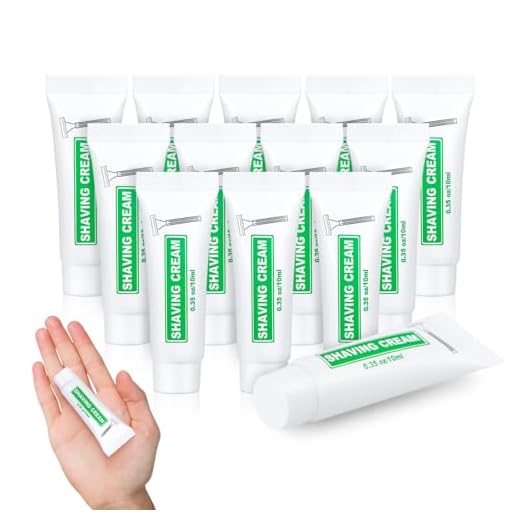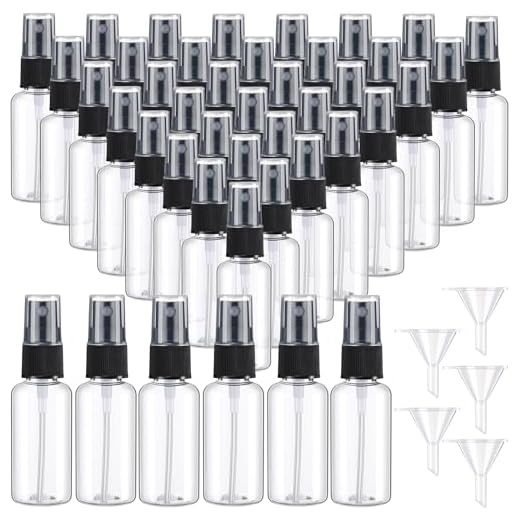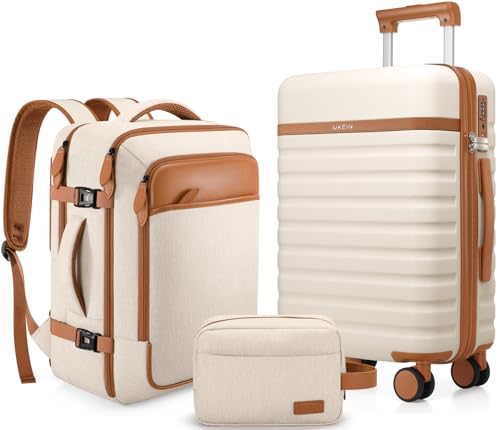



Allowed in cabin: aerosol or gel personal foams in containers no larger than 100 ml (3.4 oz), packed inside a single transparent resealable bag of about 1 litre (1 quart) and presented separately at security screening.
Follow the 3-1-1 rule: each container must be ≤100 ml/3.4 oz, all containers must fit comfortably inside one clear resealable bag (approx. 1 L / 1 qt), and only one bag per passenger is permitted through the checkpoint. Items in the bag may need to be removed from carry-on for X‑ray inspection.
Containers exceeding 100 ml are generally not permitted in cabin and should be packed in checked baggage only if the carrier and destination allow pressurised aerosols. Many airlines restrict products with flammable propellants; consult the airline’s hazardous goods policy before packing larger cans.
Practical options: transfer product into certified travel-size bottles (≤100 ml), buy a travel-sized version after security, use a solid stick alternative, or place the item in checked baggage after confirming the carrier’s rules. Keep proof of purchase for items bought post-security when connecting through other airports.
Medical or baby-care aerosols that exceed the 100 ml limit may be permitted with declaration and additional screening; carry supporting documentation and declare these items at the security checkpoint. When in doubt, verify both departure and arrival country regulations and the specific airline policy.
Razor-foam rules for cabin baggage
Recommendation: Carry aerosols, gels or foams for facial hair only in containers of ≤100 ml (3.4 fl oz) and place all such items together inside one clear resealable plastic bag (maximum 1 litre); present that bag separately at security screening.
If a can or tube exceeds 100 ml, store it in checked baggage where many carriers allow pressurised toiletry containers with per-item limits (commonly 0.5 kg or 0.5 L); airlines and national aviation authorities set exact allowances, so verify before departure.
Practical steps: transfer product into certified travel-size bottles, label volumes clearly, ensure caps are secure, use a spare zip bag to prevent leaks. Replace aerosol products with non-pressurised alternatives (solid stick, soap bar, balm) to avoid liquid restrictions altogether.
Medical aerosols or prescription grooming treatments may be permitted above standard limits if accompanied by documentation and declared at security. Check both the departure airport security page and the airline’s prohibited-items list for country-specific variations and any flammability warnings on the product label.
Is razor foam treated as a liquid, gel, or aerosol for carry-on rules?
Treat the product by packaging type: pressurized cans are aerosols; tubes, jars and pump bottles are liquids/gels; solid or stick formats are non-liquid and not subject to liquid limits.
- Cabin limits (common international standard): individual containers must be ≤100 mL (3.4 fl oz) and all must fit inside a single clear resealable bag roughly 1 quart / 1 litre in capacity.
- Pressurized aerosol cans: counted as aerosols – allowed in the cabin only if the can size is ≤100 mL. Most full-size cans (~150–200 mL) exceed the limit and will be refused at security.
- Tubes, jars, pump dispensers: treated as liquids/gels and must follow the same 100 mL / 1-quart bag rule.
- Solid or stick alternatives: not classified as liquids/gels and therefore not constrained by the 100 mL rule.
- Checked baggage: many carriers accept larger pressurized cans in checked bags subject to airline and dangerous-goods limits (IATA guidance for consumer aerosols: each container ≤0.5 kg and total aggregate ≤2 kg per passenger); verify with your airline before packing.
- Practical options: use a travel-size aerosol ≤100 mL, switch to a pump or tube that fits the 100 mL rule, or choose a solid stick/bar to avoid liquid restrictions entirely.
- Packing tip: secure caps, place cans upright, and isolate containers in plastic or clothing to reduce leakage risk if a larger aerosol is placed in checked baggage per airline rules.
- When uncertain, check the specific airline and the departure/arrival country aviation-security pages – policies for flammable propellants or special aerosols can differ by carrier and jurisdiction.
How to check container size: interpreting the 100 ml / 3.4 oz rule
If the bottle is marked “100 ml”, “0.1 L” or “3.4 fl oz”, it meets the limit; if unmarked, verify actual capacity before placing in your cabin bag using one of the methods below.
Security looks at the container’s maximum capacity, not the amount inside: a 150‑ml vessel half full is noncompliant. Keep all qualifying containers inside a single transparent resealable bag with a maximum capacity of about 1 litre (commonly one quart) and pack that bag where it is easily accessible during screening–a compact organizer or best backpack for businessmen helps.
Four quick verification methods:
1) Label check – read the printed capacity on the base or near the ingredient list. 2) Water-fill test – fill the vessel to its normal full level with a measuring cup or syringe and record the volume. 3) Weight test – 1 ml of water ≈ 1 g: weigh the empty container, fill with water to the usual fill line, weigh again; difference in grams ≈ ml. 4) Geometric estimate for simple shapes – use the cylinder formula (V = π·r²·h) for cylindrical bottles to approximate capacity when dimensions are known.
| Method | How | Accuracy / Notes |
|---|---|---|
| Label check | Read “ml”, “L” or “fl oz” markings on the item | Most reliable; airlines accept printed capacity as evidence |
| Water-fill | Use a calibrated cup or syringe to fill to the cap line and record ml | ±1–5 ml depending on measuring tool; ideal for irregular shapes |
| Weight difference | Scale empty container, fill with water, subtract weights | High accuracy if scale measures grams; 1 g ≈ 1 ml |
| Dimensional estimate | Measure diameter and height, apply V = π·r²·h for cylinders | Good for a quick check; accuracy depends on shape fidelity to formula |
Practical thresholds: 100 ml = 3.4 fl oz; aim for a printed capacity of 100 ml or smaller. Avoid using larger containers even if partly filled. For non-liquids or bulky items that won’t fit in the cabin-bag resealable pouch, consult product pages such as best pressure washer for house exterior to compare dimensions and decide whether they belong in checked baggage instead.
How to pack razor foam in a clear plastic bag for security screening
Place each foam-containing container of 100 ml (3.4 oz) or smaller inside one transparent resealable 1‑quart (≈1 L) plastic bag; align the valve or nozzle upward, fit the protective cap, expel excess air, and seal the bag fully. Present the sealed bag separately at the security checkpoint.
Use a heavy-duty freezer-style zipper bag (minimum 2–3 mil thickness) to reduce punctures. For pressurized aerosols use a second small zip pouch around the individual can before inserting it into the quart bag. Add a folded paper towel or single-layer cloth beneath items to absorb any minor leaks.
Arrange items flat with labels facing outward so screeners can identify contents without removing layers. Avoid opaque wrappings, bulky cases or stuffing that hides shapes; transparent visibility speeds inspection and reduces requests to open containers.
Secure caps with a short piece of clear tape across the cap and shoulder if the cap fits loosely. Do not pack dented or compromised cylinders; replace with a travel-size sealed dispenser if possible.
Keep the sealed quart bag at the top of your carry-on for quick removal. Check the departure airport and airline for additional limits on aerosols or pressurized items and adjust contents before arriving at the checkpoint.
Aerosol cans and pressurized grooming products: airline and safety limits
Keep pressurised personal-aerosol containers in carry-on only when each bottle is 100 ml (3.4 oz) or smaller; larger pressurised items should be transported in checked baggage and must comply with dangerous-goods limits.
- Regulatory limits (ICAO / IATA): Non-flammable aerosols – maximum 0.5 kg (500 ml) per receptacle and a total net quantity of 2 kg per passenger in checked baggage. These are the standard limited-quantity allowances many airlines follow.
- Carry-on vs checked: Cabin carriage is restricted to the standard 100 ml/3.4 oz liquid rule. For checked stowage, individual containers up to 500 ml are commonly permitted within the 2 kg total net limit; flammable aerosols are often banned or have much tighter restrictions.
- Flammability and propellants: Products using flammable propellants (butane, propane, LPG) are treated as dangerous goods. Such items may be prohibited in both cabin and hold or allowed only in very small consumer quantities – always verify with the airline.
- Labeling and UN numbers: Look for UN1950 (aerosols) and hazard division markings. Containers without clear labelling that indicate flammable or non-flammable status increase the likelihood of being refused at check-in or security.
- Medical exemptions: Prescription inhalers and certain medical aerosols have special allowances; carry prescription documentation and confirm carrier procedures before departure.
Safety handling and temperature rules
- Do not expose pressurised containers to temperatures above 50 °C (122 °F); elevated temperatures raise internal pressure and risk rupture.
- Protect valves from accidental actuation: keep caps on and consider taping the actuator when stowed in checked baggage.
- Place aerosol items away from sharp objects and heavy items that could dent the canister during baggage handling.
- When in doubt about a product’s classification (flammable vs non-flammable), treat it as hazardous and confirm with the airline or the manufacturer’s safety data sheet (SDS).
Practical steps for travel planning
- Check the airline’s Dangerous Goods policy and the departure/arrival country rules before packing pressurised products.
- If carrying multiple aerosol items, tally net quantities to ensure the total does not exceed 2 kg for checked baggage under IATA limited-quantity provisions.
- Declare any larger or unusual aerosol items at check-in; failure to declare may result in removal or fines.
- For international itineraries, verify both origin and transit carrier rules – a product permitted by one airline may be restricted by another.
Differences across jurisdictions: what TSA, EASA and UK security allow
Follow the strictest checkpoint rule on your route: keep each personal foam product in a container of ≤100 ml (3.4 oz), place all such containers in a single clear resealable bag of roughly 1 litre / 1 quart, and retain any tamper‑evident packaging plus purchase receipt for duty‑free items.
TSA (United States): the 3‑1‑1 rule applies at U.S. security checkpoints – containers must not exceed 3.4 oz (100 ml), all containers must fit in one quart‑sized clear bag, one bag per passenger. Medically necessary liquids and infant supplies that exceed 100 ml are allowed but must be declared for inspection; duty‑free products sealed in tamper‑evident bags with receipts are normally accepted when arriving from an airport shop.
EASA / EU member states: cabin restrictions mirror the 100 ml / 1 L standard. Duty‑free purchases packed in a Secure Tamper‑Evident Bag (STEB) with an itemised receipt are usually accepted for onward travel within the EU and on many international connections, provided the seal remains intact and transit rules are met. Exemptions exist for prescribed medicines and infant nutrition; these items should be presented separately at screening.
United Kingdom (CAA): post‑Brexit rules preserve the 100 ml cabin limit and the STEB mechanism for duty‑free. For transfers between UK, EU and third countries the acceptance of sealed duty‑free bags depends on where the purchase was made and where screening repeats; keep receipts and avoid opening the STEB until you reach your final destination.
Aerosol and pressurised personal products are governed by dangerous goods classification as well as the numeric limits above. Non‑flammable, consumer aerosols intended for personal care are generally permitted in cabin if they meet container limits and fit the clear bag; flammable/pressurised items may be restricted or required in checked baggage and could be banned by specific carriers. Check the carrier’s dangerous goods guidance before travel.
Practical checklist: verify the origin and destination checkpoint rules for multi‑sector itineraries, keep receipts and any prescriptions, label and pack items so security inspection is quick, and consider placing the clear bag inside a roomy travel tote such as this best canvas travel tote bag for easier removal at screening.
Options if your grooming foam exceeds the 100 ml cabin limit
If the grooming product is over 100 ml: buy a travel-sized replacement after security, place the full container in checked baggage at check-in, or switch to solid grooming items before screening.
Buy airside or at destination
Airport shops and duty‑free often stock travel sizes (commonly 50 ml or 75 ml) and sealed duty‑free liquids in tamper‑evident bags with receipts. Purchase after security to avoid screening refusal; for international connections keep the sealed bag and receipt visible to transfer security staff. Pharmacies and supermarkets at your destination typically have standard brands and inexpensive travel packs if same‑day availability is acceptable.
Gate‑check, check at check‑in or ship ahead
Ask the gate agent to gate‑check the item if screening disallows it at the gate; agents will usually place it in the hold and return it at the aircraft door or via baggage claim, but leakage and loss are possible–double‑bag the container in a zip pouch and label with name and flight number. At check‑in, move the item to hold baggage in a sealed toiletry bag, surrounded by clothing to cushion against rupture. If neither option suits, ship the product to your destination by courier or postal service; use a rigid box, absorbent material, and clear labeling to reduce claim disputes.
Solid substitutes and cabin‑friendly tools: replace aerosol/gel products with solid lather bars, soap pucks, or stick‑style lathers stored in a metal tin or plastic case. These produce similar lather with no liquid restrictions. Use electric razors or disposable/cartridge razors in the cabin; razors with removable blades must go in checked baggage. For short trips, buy single‑use soap sheets or pre‑filled travel pods (≤100 ml) before screening.









